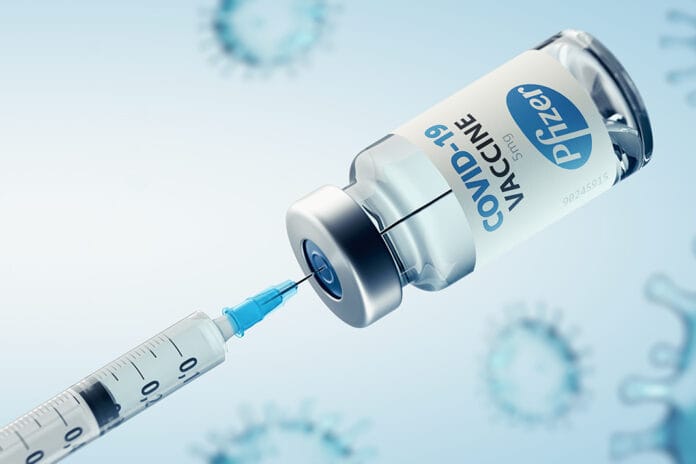Editor’s Note: Information about COVID-19 is changing on a daily, sometimes hourly, basis. We have made every attempt to ensure this article is up to date at the time of original article publication (December 24, 2020), but with the rapid changes occurring, some information may have changed since publication. Please visit coronavirus.gov for the latest news and information on COVID-19.
The current pandemic has put pressure on scientists throughout the world to produce treatments and vaccines for COVID-19. We are slated to make history with the rapid development and ensuing approval of not one but three possibly four different vaccines for COVID-19 − maybe more in the upcoming months or years.
As healthcare providers, dental professionals need to be informed about the vaccines coming to market as we may be included in the first phase when the vaccine rolls out (depending on your state). Many dental professionals have voiced their hesitancy in getting the vaccine. Most commonly, I have seen concerns about the vaccine being “rushed” or lack of information on the vaccine’s long-term effects. The aim of this article is to provide evidence-based information to help dental professionals make an educated decision about the vaccine and which one they may prefer.
According to the CDC, as of November 24, 2020, five COVID-19 vaccines are in large scale (phase 3) clinical trials.1 For the purpose of this article, I will focus on the three frontrunners that will likely be approved for administration via emergency use authorization (EUA).
Vaccine Platforms
To better understand how it is possible that we created a vaccine (actually, multiple vaccines in such a short time), I’ll need to explain vaccine platforms. Vaccine platforms are not the only reason the process was seemingly easily expedited, but it certainly contributed to the speed of the development.
Vaccine platforms, also referred to as vaccine platform technologies, is technology that uses nearly identical mechanisms, devices, delivery vectors, or cell lines for multiple target vaccines. There are multiple types of vaccine platforms. These platforms were developed for the sole purpose of addressing new emerging infectious diseases.
Vaccine platforms are a delivery method that has already been developed that only require the insertion of an antigen to complete the vaccine, allowing a quicker method for developing vaccines.
These platforms have been tested for safety and determined to be safe. The focus of the newly developed vaccine is to assess the antigenic component for safety and efficacy. The two platforms that will be explored in this article are the viral-vector vaccine platform and the RNA vaccine platform.2,3
Source: van Riel, D., de Wit, E. Next-generation vaccine platforms for COVID-19. Nat Mater. 2020 Aug; 19(8): 810-812. doi: 10.1038/s41563-020-0746-0. PMID: 32704139.
Viral Vector Vaccine
Viral vector vaccines are vaccines delivered via a modified, unrelated virus. These modified viruses are used to deliver one or more antigens. They may be nonreplicating or replicating. Research dating back to the 1980s has found multiple viruses that can be utilized as viral vectors. These viral vectors shuttle the antigen into the host cell. After delivery, the antigen is expressed, just as if it were the natural virus signaling the host to mount an immune response to the antigen.
A recent vaccine developed using this platform is the Ebola vaccine. Until the development of the COVID-19 vaccines, this vaccine was the quickest to be brought to market, with development and trials spanning five years.
The Ebola vaccine used the vesicular stomatitis virus (VSV) as the viral vector. However, the viral vector used in the AstraZeneca COVID-19 vaccine is an adenovirus, specifically a chimpanzee adenovirus that causes common colds in chimpanzees but is harmless to humans. The virus was altered to carry the gene for the spike protein. Ad vectors have a number of preclinical and clinical studies assessing both safety and efficacy, and they are also used for cancer gene therapy. Ad vectors are highly immunogenic and often do not require adjuvants to strengthen the immune response. They induce both antibodies as well as T-cell responses.4,5
As mentioned above, the Ad vector is engineered or changed from its original state to insert a specific antigen or antigens. The sole purpose of this method is to present a naturally occurring form of the antigen to the immune system yet be void of the entire infectious pathogen itself. The immune response elicited through this method is similar to natural infection minus disease onset. In regard to the overall safety of Ad vectors, they “have been tested extensively in human clinical trials for many years and are accepted as being safe for human use.” (Holman, 2009, p. 85)6
Considering the safety of the Ad vectors has been studied since the 1980s, the focus shifts to the safety of the antigen being used in the viral vector vaccine. Although passive reporting will continue over the next two years, a good assessment of safety and efficacy can be determined with the data collected thus far. The primary endpoints of the phase 3 trials for the AstraZeneca viral vector vaccine to prevent COVID-19 have been peer-reviewed but are not available to the general public at this time as it is still considered confidential and proprietary. Therefore, I will default to the results of the phase 1/2 trials for evidence of safety and efficacy.
The results from the phase 1/2 trial showed the “majority of adverse events were mild to moderate in severity, and all were self-limiting.”7 Additionally, the results show antibodies to the spike protein at 28 days with one dose. Neutralizing antibodies were detected in all participants after a booster dose. The conclusion of the review of the data available after the phase1/2 trial states, “ChAdOx1 nCoV-19 was safe, tolerated, and immunogenic. A single-dose elicited both humoral and cellular responses against SARS-CoV-2, with a booster immunization augmenting neutralizing antibody titers.” 7
In layman’s terms, this trial showed no safety or efficacy concerns. However, since the reporting of data associated with the primary endpoints set for the clinical trial, a mistake was made in dosing of one group of volunteers that led to higher efficacy. Currently, this vaccine is going through a further review to determine if different dosing would result in higher efficacy. The dosing mistake was a lower dose, and if this data shows dosing can be reduced, that will increase the number of people that the vaccine will be available to once it is distributed to the public.
AstraZeneca has been very transparent regarding the different dosing regimens, and you can read more about it here.
Additionally, Johnson & Johnson (J&J) is developing a viral vector vaccine that they hope will require just one dose. It may very well make it to market before the AstraZeneca vaccine, though they have not met their primary endpoints, nor have they released any information on safety or efficacy. With the need for further studies on the AstraZeneca vaccine, J&J may bypass it to be the first viral vector vaccine to be released for the prevention of COVID-19.
RNA Vaccine
The technology used to develop the mRNA vaccines developed by Pfizer and Moderna has been in development since 1989. The technology was originally promoted as a therapeutic. However, a couple of years later, it was advocated for as a vaccine platform.
This timeline shows there are almost 30 years of research and studies in the area of mRNA as a vaccine platform. The first successful immune response was elicited via mRNA vaccine in 1993. This vaccine was administered subcutaneously, and it was liposomal-encapsulated mRNA encoding nucleoproteins of the influenza virus. It elicited a specific cytotoxic T-cell response. This is where the research and development of this platform began.8
This vaccine works by encoding mRNA to produce the spike protein found on the outside of the SARS-CoV-2 virus. This technology is based on protein synthesis and the central dogma of molecular biology (DNAàRNAàprotein). Some mRNA vaccines encode the antigen and viral replication machinery, which allows the antigen to replicate. The mRNA vaccine produced by Pfizer and Moderna is a nonreplicating vaccine. Therefore, it only encodes for the antigen (in this case, the spike protein) and not the viral replication machinery.
The mRNA vaccine mechanism of action that initiates the immune response mimics that of the viral infection. When our cells are infected with a virus, the virus takes over our cells’ machinery to replicate and produce more virions. This hijacking of our cells’ replication machinery follows the same design (DNAàRNAàprotein). This process is used to encode mRNA that travels to the ribosome and produces the viral proteins that leave the cell, and this process continues with other cells until your immune system takes action to stop the process.
The vaccine is preassembled mRNA that codes for only the spike protein and not the entire SARS-CoV-2 virion. As mentioned, this is a nonreplicating vaccine, so replication does not occur. Once the mRNA has entered the cytoplasm of the cell, the ribosome starts doing its job to create the protein − in this case, a piece of the virus, the spike protein. Once the mRNA in the cell is degraded, it can no longer produce the spike protein.
The production of the spike protein triggers the immune system, just as it would be triggered by natural infection, which leads to the immune system recognizing the spike protein. This recognition of the spike protein will allow your immune system to quickly respond and eliminate the SARS-CoV-2 virus if/when you come in contact with it in the future.9
In short, the vaccine works exactly like natural infection without the disease, and the possible long-term effects the virus can elicit. Because the vaccine only encodes for the spike protein, this also ensures that it cannot cause infection or disease.
To claim the vaccine is somehow more dangerous than the virus is complete conjecture at this time. All the safety data has been impressive, as well as the efficacy. Safety evaluation will continue as the vaccine is rolled out to the public. This is considered phase 4 clinical trials. They go on for the duration of the vaccine’s usage; this is the same type of surveillance that caught the increased risk of heart problems associated with Vioxx − a testament to phase 4 trials’ efficacy.
The results published for the phase 3 trials of the Pfizer mRNA vaccine showed an overall efficacy of 95%. Regarding adverse events, they reported 126 serious events in the vaccine group and 101 in the placebo group. With injection site reactions, pain, redness, and swelling were the most commonly reported adverse event. Additional adverse events reported included fever, muscle aches, and myalgia.
Six total deaths were reported − four in the placebo group and two in the vaccine group. The deaths in the vaccine group were attributed to cardiac arrest and arteriosclerosis. Deaths in the placebo group were myocardial infarction (n=1), hemorrhagic stroke (n=1), and unknown causes (n=2). The deaths were not vaccine-related, according to the FDA and the CDC.10,12
The results published for the phase 3 trials of the Moderna mRNA vaccine showed an overall efficacy of 94.5%. The frequency of serious adverse events reported was the same in both the vaccine group and the placebo group, indicating no significant association with the vaccine. The most common adverse reactions, all of which were self-limiting, include injection site pain (91.6%), fatigue (68.55), headache (63.0%), muscle pain (59.6%), joint pain(44.8%), and chills (43.4%).
An additional benefit being explored in the preliminary data associated with the Moderna vaccine is that a single dose may protect against asymptomatic infection. This has been a topic of discussion as it is possible and common for vaccines to prevent disease, but not necessarily prevent infection. The MMR vaccine works in the same manner yet is quite successful at preventing measles, mumps, and rubella through herd immunity. The concern is that people may throw caution to the wind and forgo wearing masks, distancing, and handwashing under the impression they are unable to spread the virus. The truth is that it is simply unknown at this time.13
Four people in the Pfizer trial and three in the Moderna trial developed Bell’s Palsy. Though this may sound concerning, it was determined that the onset of Bell’s Palsy was unlikely related to the vaccine, and it resolved in all patients within 21 days. Bell’s Palsy is relatively benign and is often associated with existing dormant viral infections, impaired immunity, sleep deprivation, physical trauma, minor illness, or autoimmune syndromes. It affects 40,000 people in the U.S. every year; this supports the conclusion that the incidents of Bell’s Palsy in the vaccine trial are in line with the normal statistical rate that would occur in the population.10,11
Final Thoughts
Getting a vaccine is a very personal decision. However, I implore dental professionals to use critical thinking skills and weigh the risks versus the benefits of the multiple COVID-19 vaccines that will be coming to market.
Currently, Moderna and Pfizer’s mRNA vaccines have been approved for emergency use authorization (EUA). Vaccination will be done in phases; each state has a vaccination plan in place. Please contact your state dental hygiene association or state health department to determine when you will be eligible to be vaccinated. You may find you are more comfortable with one type versus another; therefore, you may need to wait longer to get the vaccine that you prefer.
Viral vector vaccines and mRNA vaccines are not the only types of vaccines being developed in an attempt to stop the pandemic. Additionally, there are inactivated/attenuated, protein-based, as well as repurposed vaccines, such as the bacillus Calmette-Guerin (BCG) vaccine, used to protect against tuberculosis.
Although you will find arguments against many different vaccines, some of these arguments don’t hold water. Vet your sources of information well and make an informed decision for yourself and your family.
Need CE? Check Out the Self-Study CE Courses from Today’s RDH!
Listen to the Today’s RDH Dental Hygiene Podcast Below:
References
- Frequently Asked Questions about COVID-19 Vaccination. (2020, December 13). Centers for Disease Control and Prevention. Coronavirus Disease 2019 (COVID-19). Retrieved from https://www.cdc.gov/coronavirus/2019-ncov/vaccines/faq.html.
- Vaccine Platforms: State of the Field and Looming Challenges. (20019). Johns Hopkins Bloomberg School of Public Health: Center for Health Security. Retrieved from https://www.centerforhealthsecurity.org/our-work/pubs_archive/pubs-pdfs/2019/190423-OPP-platform-report.pdf.
- van Riel, D., de Wit, E. Next-generation vaccine platforms for COVID-19. Nat Mater. 2020 Aug; 19(8): 810-812. doi: 10.1038/s41563-020-0746-0. PMID: 32704139. Retrieved from https://www.nature.com/articles/s41563-020-0746-0.
- Rauch, S., Jasny, E., Schmidt, K.E., Petsch, B. New Vaccine Technologies to Combat Outbreak Situations. Front Immunol. 2018 Sep 19; 9: 1963. doi: 10.3389/fimmu.2018.01963. PMID: 30283434; PMCID: PMC6156540. Retrieved from https://www.frontiersin.org/articles/10.3389/fimmu.2018.01963/full.
- Wold, W.S., Toth, K. Adenovirus vectors for gene therapy, vaccination and cancer gene therapy. Curr Gene Ther. 2013; 13(6): 421-433. doi:10.2174/1566523213666131125095046. Retrieved from https://www.ncbi.nlm.nih.gov/pmc/articles/PMC4507798/.
- Holman, D.H. (2009). Vaccines for Biodefense and Emerging and Neglected Diseases: Viral Vectors. 77–91. doi:10.1016/b978-0-12-369408-9.00007-x. Retrieved from https://www.sciencedirect.com/science/article/pii/B978012369408900007X.
- Folegatti, P.M., Ewer, K.J., Aley, P.K., et al. Oxford COVID Vaccine Trial Group. Safety and immunogenicity of the ChAdOx1 nCoV-19 vaccine against SARS-CoV-2: a preliminary report of a phase 1/2, single-blind, randomised controlled trial. 2020 Aug 15; 396(10249): 467-478. doi: 10.1016/S0140-6736(20)31604-4. Epub 2020 Jul 20. Erratum in: Lancet. 2020 Aug 15;396(10249):466. PMID: 32702298; PMCID: PMC7445431. Retrieved from https://www.thelancet.com/journals/lancet/article/PIIS0140-6736(20)31604-4/fulltext.
- Schlake, T., Thess, A., Fotin-Mleczek, M., Kallen, K.J. Developing mRNA-vaccine technologies. RNA Biol. 2012; 9(11): 1319-1330. doi:10.4161/rna.22269. Retrieved from https://www.ncbi.nlm.nih.gov/pmc/articles/PMC3597572/
- Pardi, N., Hogan, M.J., Porter, F.W., Weissman, D. mRNA vaccines – a new era in vaccinology. Nat Rev Drug Discov. 2018 Apr; 17(4): 261-279. doi: 10.1038/nrd.2017.243. Epub 2018 Jan 12. PMID: 29326426; PMCID: PMC5906799. Retrieved from https://www.nature.com/articles/nrd.2017.243
- Vaccines and Related Biological Products Advisory Committee Meeting. FDA Briefing Documents. (2020, December 10). Pfizer-BioNTech COVID-19 Vaccine. Retrieved from https://www.fda.gov/media/144245/download
- National Institute of Neurological Disorders and Stroke. Bell’s Palsy Fat Sheet. Retrieved from https://www.ninds.nih.gov/Disorders/Patient-Caregiver-Education/Fact-Sheets/Bells-palsy-Fact-Sheet
- Centers for Disease Control and Prevention. Advisory Committee on Immunization Practices. Grading of Recommendations, Assessment, Development, and Evaluation (GRADE): Pfizer-BioNTech COVID-19 Vaccine. Retrieved from https://www.cdc.gov/vaccines/acip/recs/grade/covid-19-pfizer-biontech-vaccine.html
- Vaccines and Related Biological Products Advisory Committee Meeting. FDA Briefing Documents. (2020, December 17). Moderna COVID-19 Vaccine. Retrieved from https://www.fda.gov/media/144434/download












